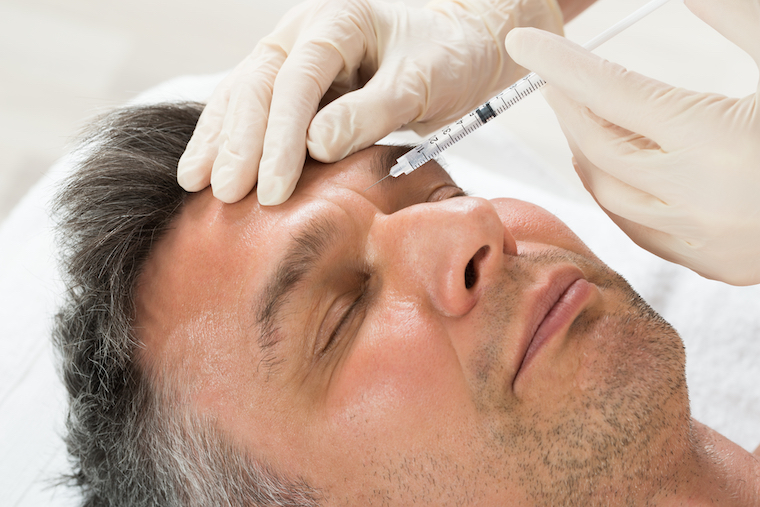4 Tips for Improving Patient Outcomes as an Aesthetic Professional

Completing training and becoming proficient in any medical specialty is always a complex process, and aesthetic medicine is no exception.
Since many new practitioners are, understandably, primarily focused on the proper execution of their newly-learned techniques and procedures, it’s easy to lose sight of the bigger picture—holistic patient care, and patient satisfaction.
Overall patient satisfaction can be influenced by a host of factors apart from the perfection of your technique. It can also have a huge influence on whether a patient comes back to your office the next time they’re in the market for an aesthetic treatment.
Here are four tips for improving overall patient outcomes as an aesthetic professional.
The selfie effect
There are a number of ways prospective patients evaluate their appearance before deciding to explore aesthetic procedures.
These days, however, it’s often the ubiquitous “selfie” that is their method of choice.
While a quick snap of a smartphone camera may be ideal for that profile pic or an Instagram post, it’s important that patients know the limitations of the selfie in evaluating appearance for aesthetic treatment purposes.
Selfie images can offer a significantly distorted representation of a patient’s appearance due to camera lens and distance distortion. Mirrors and poor lighting sources may also make for images that are significantly separate from reality.
Quite simply, these methods are just not suitable for cosmetic evaluation.
The use of standard digital photography and lighting by the aesthetic practitioner can much more accurately document baseline anatomy and asymmetry and give patients a realistic portrayal of what they actually look like.
This baseline photograph can be printed, or it may be used digitally to map out treatment strategies, highlight areas of concern, or identify areas to be injected.
Also, it’s important to have a baseline record to alleviate any concerns post-procedure, as patients will certainly scrutinize their face or body after the procedure.
Video capture can also be highly useful in documenting patient animation before neuromodulation.
Pre-treatment video, when considering neuromodulation of the upper and lower face, can document different animation patterns. It can also document speaking patterns prior to neuromodulation of the perioral area.
Why are they there?

The reasons for seeking aesthetic treatments are many and varied, and it’s vital that, as an aesthetic practitioner, you identify the precise motives bringing each patient through your doors.
Many patients may have a specific appearance goal or an upcoming engagement that’s influencing them to seek cosmetic procedures.
If the physician is not aware of these motivations, the patient may entertain unrealistic expectations. That’s a recipe for a dissatisfied patient.
Because of this, the consultation may be as important as the actual procedure in assuring patient satisfaction.
The aesthetic consultation has a two-fold purpose. It allows the patient to voice goals and concerns, while also becoming comfortable with the physician. Frank, detailed discussions about realistic outcomes, as well as the time needed to achieve them, are vital so that patients can decide their own comfort level in terms, not only of the procedure, but also of the required financial investment.
Post care/topical treatments
Post-procedure, an adjunctive skincare regimen can also help to significantly enhance patient satisfaction with the cosmetic result.
With this in mind, it’s important to provide a skincare plan for the patient with specific “dos” and “don’ts” to complement the procedure itself and enhance the success of the cosmetic plan.
When combined with aesthetic treatments, topical retinoids, emollients, and pigment lighteners can all have significantly visible results.
It’s also important to provide printed instructions on post-treatment care to reinforce instructions given during the procedure, as most patients are unlikely to retain all the information presented to them verbally.
Full disclosure

As touched on above, perhaps the most important factor in patient satisfaction is complete transparency about:
- Appropriate treatments for the patient’s needs
- Results that can be expected
- Expected recovery time
- Total cost of the procedure
While patients may present for a specific cosmetic concern, it’s important for the provider to assess the whole face and communicate whether the treatment sought can actually achieve the desired results.
It’s important to allow the patient to point out their main concerns, but a global physician perspective is vital to setting realistic expectations.
As an aesthetic medicine practitioner, your work can have life-altering effects on those who come to you for treatment, but it’s not just technical proficiency that makes for ultimate patient satisfaction. Putting appropriate effort into the factors listed above can make for a significantly improved outcome for everyone involved.
Posted on behalf of
640 South San Vicente, Suite 410
Los Angeles, CA 90048
Phone: (310) 274-9955
info@aaams.net
Monday - Friday 9:00 AM – 5:00 PM
